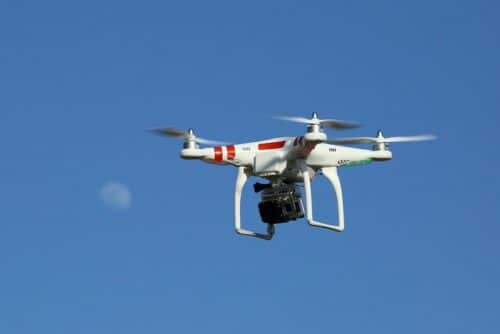Researchers from South Korea have invented an AI-assisted cooperative infrastructure to provide a safe environment and epidemic prevention services in smart cities

Efficient surveillance and epidemic prevention are of utmost importance with enhancement in technologies. For eg., In the COVID-19 situation, it was difficult to monitor and prevent the spread of it. Hence, a team of researchers led by Associate Professor Hyunbum Kim from Incheon National University, South Korea, has designed an artificial intelligence-assisted cooperative infrastructure for unmanned aerial vehicles (UAVs) and mobile robots to provide efficient surveillance and epidemic prevention services. With the increase in 5G implementation, it is predicted that UAVs or drones and mobile robots will be used for various range of services in smart cities such as patrolling, accident detection and rescue, and epidemic prevention.
According to Dr. Kim, “It is critical to look at surveillance and unprecedented epidemic spread such as COVID-19 together. This is why we designed the next generation system to focus on aerial-ground surveillance and epidemic prevention supported by intelligent mobile robots and smart UAVs.”
The team developed the system composed of two subsystems, one for public areas and one for private areas. The system comprises of Centralized Administrator Center (CAC) which is further connected to various Unified Rendezvous Stations (URRs) that are situated in public areas. The URRs provide UAVs and mobile robots replenishment and share data. Mobile robots are also equipped with charging facilities to charge airborne docking UAVs. The public system aims at patrolling public areas, detecting accidents and calamities, providing aid, and performing epidemic prevention activities like transporting medical equipment. The private system can provide rapid medical deliveries and screening tests to homes
“Privacy is indeed a major concern for any surveillance mechanism. Therefore, we have created different privacy settings for different systems. For the public system, there are restricted districts where only authorized public UAVs can enter. For the private system, there are permanent private zones where no UAVs can enter except in emergencies and temporal access zones where permitted UAVs can enter with legal permission from the owners.”
This infrastructure will be able to improve an individual’s life and can be used for various applications i.e. from detecting and preventing potential terror in public spaces to detecting and extinguishing fires in private homes.
Click here for the Published Research Paper







